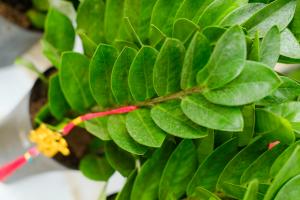Introduction
Dissolved oxygen is a critical component for the survival of aquatic life. It is the oxygen that is present in the water and is necessary for the respiration of aquatic animals and plants. There are several factors that can affect the levels of dissolved oxygen in water. One such factor is dead plant matter present in the water. In this article, we will explore how dead plant matter affects dissolved oxygen in water.
What is dead plant matter?
Dead plant matter, also known as organic matter, refers to the decaying and decomposed parts of plants or plant products such as leaves, stems, and roots. It is a natural part of the ecosystem and can be found in various bodies of water, including oceans, rivers, lakes, and ponds. Dead plant matter can accumulate in water bodies and negatively impact the levels of dissolved oxygen in the water.
How dead plant matter impacts dissolved oxygen levels
Dead plant matter can quickly deplete the levels of dissolved oxygen in water. When dead plant matter accumulates in a body of water, it provides a rich food source for bacteria to thrive. As these bacteria consume the dead plant matter, they also consume the dissolved oxygen present in the water. This process is known as biochemical oxygen demand (BOD). As a result, the levels of dissolved oxygen in the water decrease, creating an environment that is less suitable for aquatic plants and animals.
Effects on aquatic life
The decrease in dissolved oxygen levels caused by dead plant matter can have adverse effects on aquatic life. Fish and other aquatic animals rely on oxygen present in the water to survive. When the levels of dissolved oxygen decrease, it can lead to fish kills and other negative consequences. Additionally, the decrease in dissolved oxygen levels creates an environment that is less suitable for aquatic plants to grow, leading to a decline in the overall health of the ecosystem.
Preventing dead plant matter buildup
To prevent dead plant matter buildup and the negative impacts it can have on dissolved oxygen levels, it is important to implement proper management practices. This includes limiting the amount of fertilizer and animal waste that enters the water, as these can contribute to an excessive buildup of plant matter. Additionally, regularly removing dead plant matter from water bodies can help maintain healthy dissolved oxygen levels and prevent negative impacts to aquatic life and the ecosystem as a whole.
Conclusion
Dead plant matter is a natural part of the aquatic ecosystem, but its accumulation in bodies of water can have negative impacts on dissolved oxygen levels and aquatic life. By implementing proper management practices, we can help prevent dead plant matter buildup and promote a healthy ecosystem with healthy levels of dissolved oxygen.

 how many times do yo...
how many times do yo... how many planted tre...
how many planted tre... how many pine trees ...
how many pine trees ... how many pecan trees...
how many pecan trees... how many plants comp...
how many plants comp... how many plants can ...
how many plants can ... how many plants and ...
how many plants and ... how many pepper plan...
how many pepper plan...
































